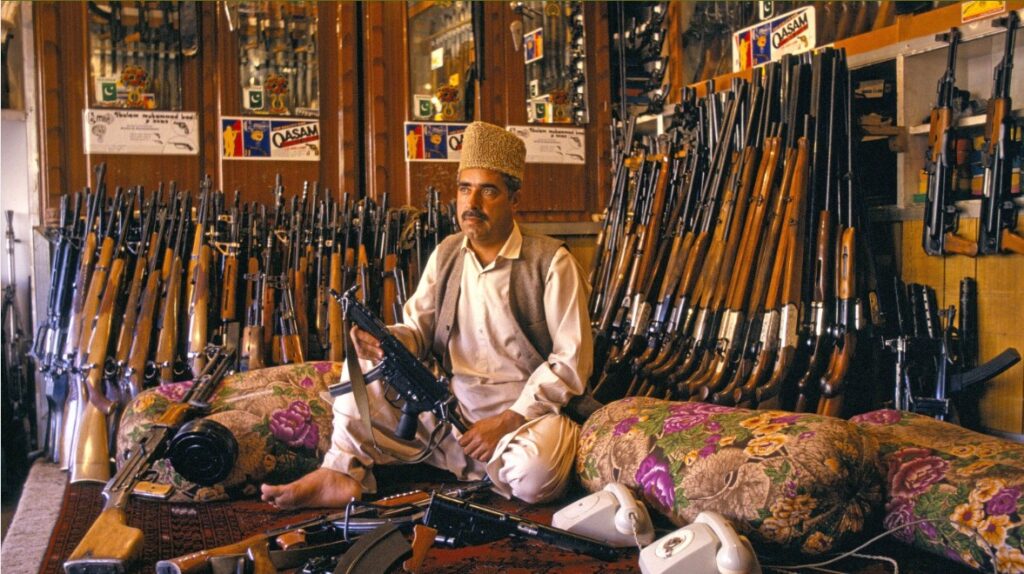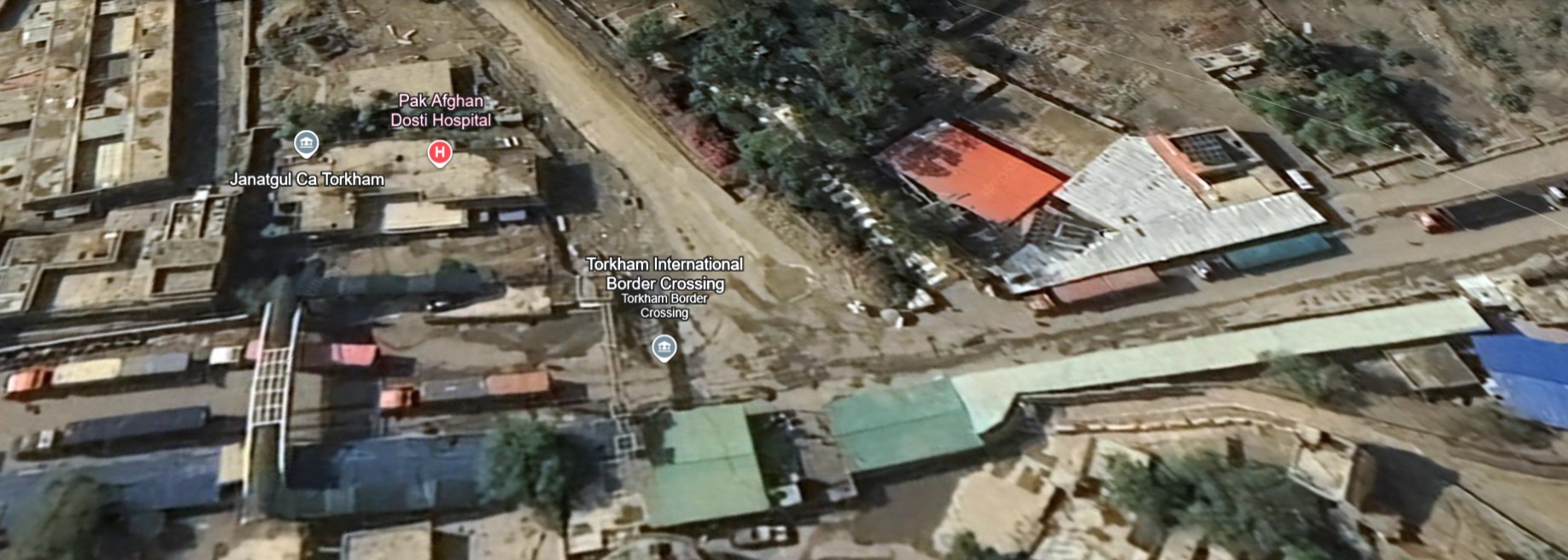From the century-old gun market of Dara Adam Khel to the burgeoning arms bazaar in the Afghan border towns, the rugged borderlands of Afghanistan and Pakistan are known for a shadow economy specially fueled by the decades of conflicts and weak governance. The decades of armed conflicts, insurgencies, and skirmishes shaped the region’s security landscape.
On the Pakistan side, the Dara Adam Khel and Karkhano markets serve as key hubs of arms trade. Across the border in Afghanistan, open shops and bazaars in provinces like Helmand, Kandahar, and Nangarhar emerged as hotspots for arms proliferation. Among many national and international players, the publicly known Tehrik-e-Taliban Pakistan is exploiting the market, further complicating the region’s security dynamics.
The infamous Dara Adam Khel
Dara Adam Khel is the world’s largest open gun market situated in the Khyber province of Pakistan. It is located less than 100 km away from the Pakistan-Afghanistan border. This market is believed to be an illegal source of arms and ammunition for the Taliban for many decades. Here the local people are Taliban’s. This town was a part of the Federally Administered Tribal Area (FATA) till 2018, when it was merged with Khyber province. FATA had a separate legal framework where the national legal system was not valid. However, the market is technically illegal after 2018 but practically operational as it has existed for centuries.

Darra is a straight-line bazaar where the side alley consists of manufacturing places. Row of small low boxes form shops. It looks like a cottage industry. It has more than 2000 shops where more than 20000 people work. “Many sons and a lot of guns” is a philosophy among the Darra people. A single person can make an AK-47 in four days. If 4 people work together, 20 AK47s could be manufactured in a week. A single shop manufactures approximately 15k of bullets every day. A submachine gun bullet costs $1 each. Shooting in rapid fire can burn through $100 in seconds. The prices could vary by buyers, sellers, size, and quality. The buyers could be common people who buy for wedding ceremonies and mafias for their personal gains.
Weapons are not only manufactured here but also assembled, repaired, and modified. More than 75% of the population in this town has indulged in this business for generations. It offers a variety of firearms from small pistols to the most sophisticated firearms like the American M16 or from the Russian model of AK47 to the Austrian Glock pistol, everything is available here. The potential customers could be security personnel, common man, Taliban’s and businessmen.
We can get either the original made or a copy of the original, but an absolute work where there is no flaw can be found. The foreign guns of Americans, Russians, Austrians, Chinese, and Pakistanis all coexist here. The cost of the firearms also differs for the make and size of the firearms. Usually, American guns are expensive than those that are locally made. But the interesting fact is you can get all the guns for absolute cheap prices. For instance, an M16/M4 gun could cost ranging $1000 to $2000 in the US, while the Darra replica copy just costs $100 to $200. People here are also capable of reverse-engineering firearms.
The invasion of the Soviet Union into Afghanistan from 1979 to 1989 and the U.S. war on Afghanistan fueled the market with a variety of sophisticated weapons from time to time. The Darra Bazaar was the biggest source of weapons for the Taliban during the U.S. invasion.
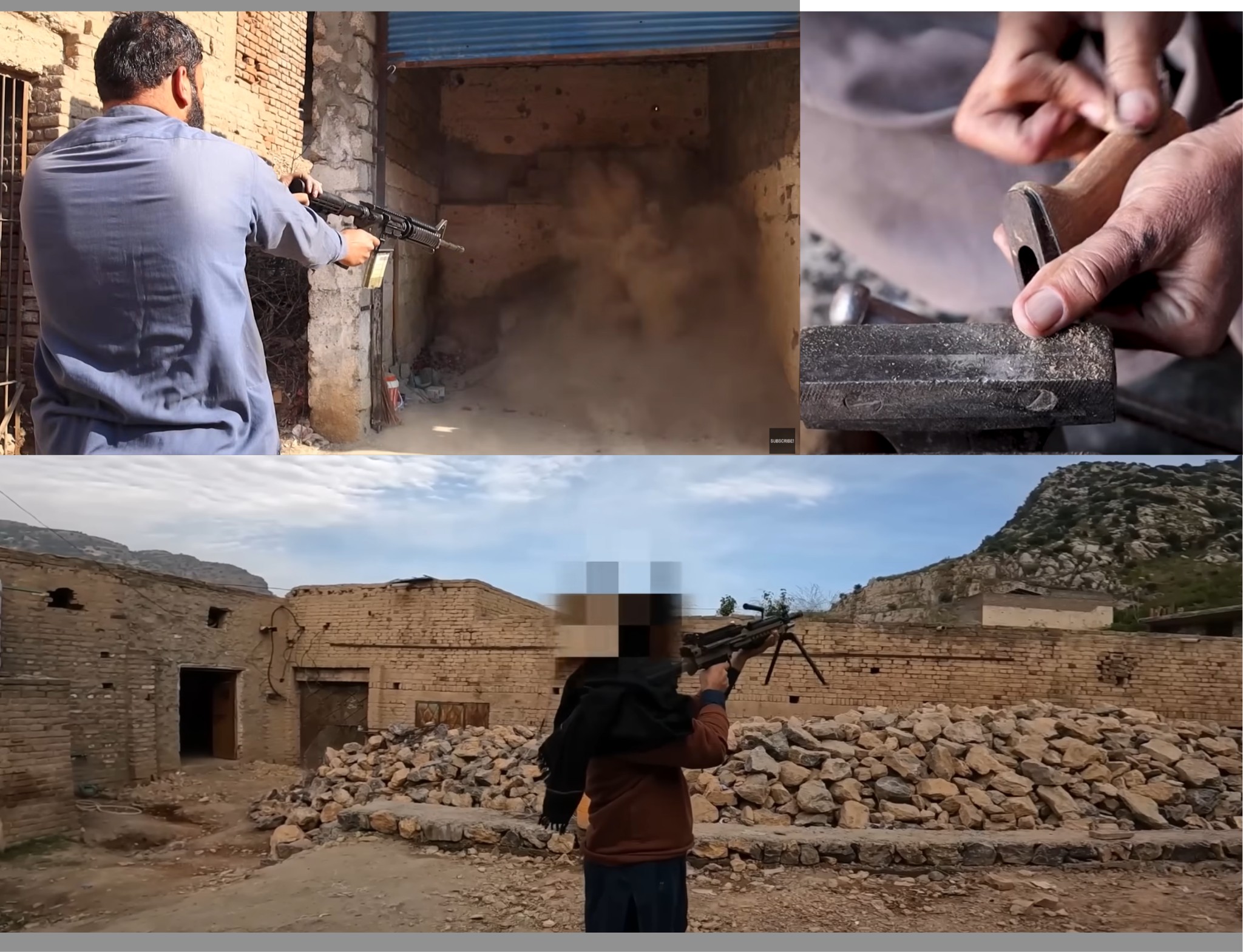
The merchants doing test fire. According to the locals, the business is not what it once was and has actually decreased. It may suggest that the fall was due to the Taliban’s possession of American leftover guns worth more than $7.1 billion in August 2021 amid the withdrawal, according to the Defense Department of Afghanistan in 2022.
However, the amount of manufacturing indicates that the Dara Adam Khel market still has a huge market among many non-state actors, even Tehrik-e-Taliban’s of Pakistan (TTP) could be one of those. The recent uprising of insurgency in Pakistan is raising concerns over the Government of Pakistan. Particularly security incidents by TTP and the Balochistan Liberation Army (BLA). It is evident that the Taliban took over Afghanistan in 2021, and the increased attacks by TTP are not coincidental. While Pakistan blames the Taliban for protecting and facilitating the TTP, the Government of Afghanistan denies its charges. Also, it is significant to note that the recent attacks by both TTP and BLA were equipped with sophisticated weapons, which seem to be coming from the U.S.’s leftover arsenal.
The impact of the U.S. Withdrawal and leftover arsenal
The U.S. withdrawal in 2021 left behind an arsenal, including aircraft, air-to-ground munitions, weapons, military vehicles, communication equipment, and other materials, as reported by the U.S. Department of Defense in 2022. The U.S. gave a total of $18.6 billion worth of weapons to the Afghan National Defense and Security Forces (ANDSF) from 2005 to 2021, and equipment worth $7.12 billion remained in Afghanistan after the U.S. withdrawal in August 2021.
As of August 2021, about 316,260 small arms, including assault rifles, pistols, and machine guns, were left to the Afghan forces. This includes around 258,00 assault rifles such as M16s and M4, 126,295 pistols, and 64,363 machine guns. In addition, 176 artillery pieces, over 1 million mortar rounds, and specialized munitions worth $48 million were destroyed. Nearly 42,000-night vision and surveillance devices, grenade launchers, and an unknown number of snipers. 78 aircraft, including UH-60 Black Hawks and 10 AC-208 straight aircraft, though US claims they were disabled. Also, 181,640 air-to-ground munitions, 9,200 guidance systems, and 95 drones were destroyed. Among military vehicles, 23,825 Humvees, some with mounted weapons, nearly 900 combat vehicles, and up to 50 armored vehicles were left behind. These figures reflect what was left with Afghan forces, and much of it could be captured by the Taliban, but the operation conditions of weapons are unknown.
Post-2021 Arms Market Shifts
The shift towards insurgency to governance and the possession of arsenal led the need for arms to wane. The surplus of the U.S. arms and gears was capitalized by the merchants in the towns of the southern and eastern Afghan border, particularly Helmand, Kandahar, and Nangarhar. On the other side, Pakistan border downs Peshawar and Darra Adam Khel capitalized this over supplies.
The presence of weapon markets near the Pakistan border raises concerns, especially the growing TTP insurgency in Pakistan. The studies from Small Arms Survey and Afghan Peace Watch reveal that arms trafficking in Afghanistan has become highly localized. The Taliban formalized the gun trade by issuing licenses and permits for tax or free. In many towns, gun selling is regularized. Few merchants claim that Afghan intelligence inspects periodically. Taliban’s are careful about control over M4, M16, night vision and thermal sights, though the allied groups like TTP still gain U.S. weapons showing the lack in control or willingness to trade. Weapons dealers in Darra Adam Khel and Peshawar still claim to have U.S. military gear for sale, including M4 and M16 rifles, night vision, and thermal sights. However, due to increased scrutiny, dealers in both Afghanistan and Pakistan have become more cautious when selling these high-value items
Militant groups from the Middle East and Central Asia sought to acquire them. Iranian and Chinese merchants also reportedly entered the market. Though the Taliban has taken full control of Afghanistan, it faces security challenges from the Islamic State Khorasan Province (ISKP), an affiliate of the Islamic State. It is believed that ISKP also exploits these markets for their arm’s needs.
The Nangarhar: A Key Firearms Hub
Nangarhar is one of the most populated provinces and has long been a hub for trade. The proximity to the arms market in the Khyber province of Pakistan makes it a strategic location. The Torkham Border Crossing serves as a major route for both legal and illegal trade between Afghanistan and Pakistan. A recent closure of Torkham borders for a month costs a loss of $70 million for Pakistan.

It was one of the pivotal gateways for smuggling illegal weapons made in Dara Adam Khel and Peshawar in Khyber, known as “Dara Wale” weapons in the region. During the fall of ANDSF, the price of the weapons decreased, but when the Taliban raided all the members of ANDSF and confiscated the weapons, the price of the weapons in the market regained its value. When local-level Taliban leaders were released from prison immediately after the Taliban takeover, they seized many weapons and sold them immediately to weapons dealers. A report says that a single Beretta pistol sold for $222 while an AK-47 sold for $311.
Trends in Pricing and Demands
While larger quantities of seized firearms go to district governors and senior Taliban officials, small seizures are kept by local leaders and sold illegally due to poor economic conditions. The destination of these weapons reportedly leads into Pakistan, where the demand is high. In late 2022, the prices of M4 and M16 were between $1200 and $1600, while prices in other regions reached $2400 for the US-made M4. Beretta pistols are widely used pistols. Before collapse, the price ranged between $440 to $550 and dropped to $130 during the fall, but now it is progressively regaining as it costs $350 to $550 depending on the quality. The AK-pattern firearms used to go for $745, dropped to $220 at the lowest during the fall. Currently, it goes for $600 to $650. The prices differ per province as prices are considerably higher in Helmand than in Nangarhar. It is due to the severity of the Taliban’s control of the market by the Taliban. Another interesting fact is that the Chinese in the region were interested in buying the night vision used by the Americans and paid up to $2500 per item.
The Taliban’s into routine weapon seizures from smugglers and the public, seeking the permit or license to hold weapons. The vital area identified for smuggling is Torkham Crossing, followed by Tora Bora Crossing.
Torkham Crossing
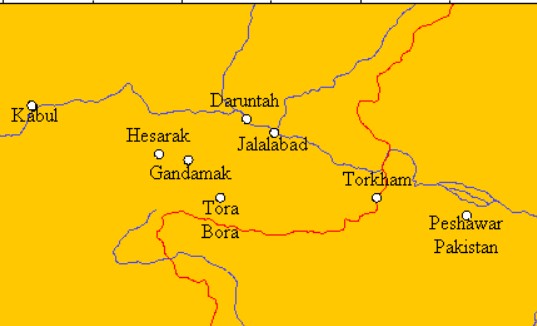
Drugs-for-Weapons Trade and International Arms Smuggling
Another significant part of the arms market is also linked with the illegal drug market, particularly opioids. The Golden Crescent, comprising Afghanistan, Iran, and Pakistan, is a key global hub for opium production, directly impacting Indian states like Jammu and Kashmir, Punjab, Rajasthan, and Gujarat due to their proximity to the Indo-Pakistan border). It has been known for illegal drug trading for decades. During the invasion of the U.S. in Afghanistan, the Taliban reportedly used the tactic of drugs for firearms. Instead of money, they trade drugs with firearms where there is no trace of money. After the fall of the republic in Afghanistan, the outsiders or foreign actors got weapons from Afghanistan. One such example is “Operation Eureka” by multiple international law enforcement agencies, which arrested 130 Ndrangheta mafia members in 2023 (Ndrangheta is a mafia-type criminal syndicate originating from the Calabria region of Italy). The arrested suspects are an Italian criminal network joined with the Gulf Clan of Colombia and a criminal gang in Ecuador indulged in smuggling of Cocaine from South America to Europe. In return, they got illegal arms shipments from Pakistan containing Afghan-origin weapons for the notorious Brazilian gang called Praimeiro Commando da Capital (PCC). This case illustrates the reality of the Afghan firearms market’s reach in the international market. Notably, in mid-2024, militants in Kashmir used AK47 and the American-made M4 against the Indian security forces.
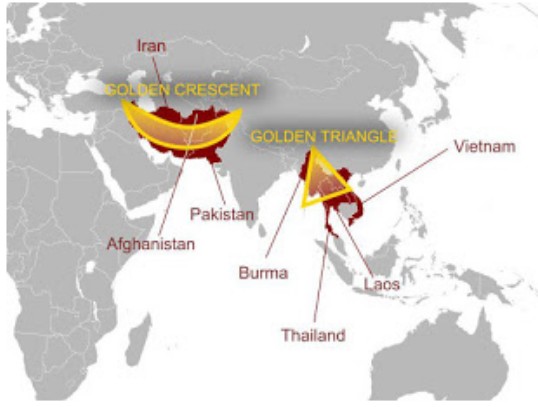
The Lasting Impact of the Border Gun Markets
The Afghan-Pakistan border remains a major hub of illegal arms trade. Markets like Dara Adam Khel and Karkhano and arms hubs like Nangarhar fuel the regional conflicts and pose a serious concern. The U.S. withdrawal and leftover arsenal in 2021 flooded the market with advanced weaponry, benefiting insurgent groups like Tehrik-e-Taliban Pakistan, Balochistan Liberation Army, Islamic State of Khorasan Province, and other militant groups and criminal networks. Despite the Taliban’s efforts to curb the illegal arms trade by regulating the drug smuggling route, it remains active and used for both firearms and drug smuggling. With weapons reaching beyond the region like India, Europe, and Southern America, long-term security risks remain growing concerns.

